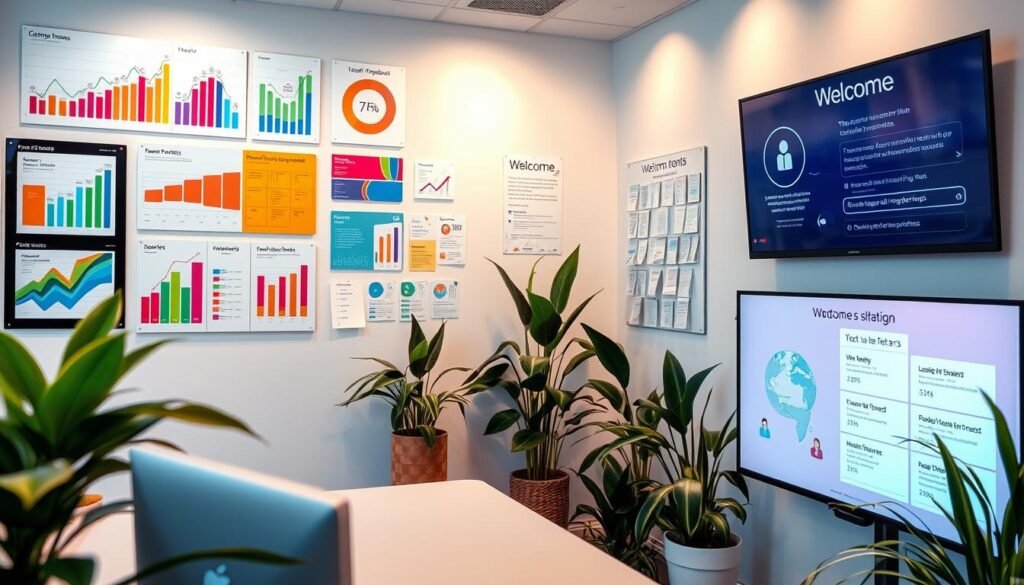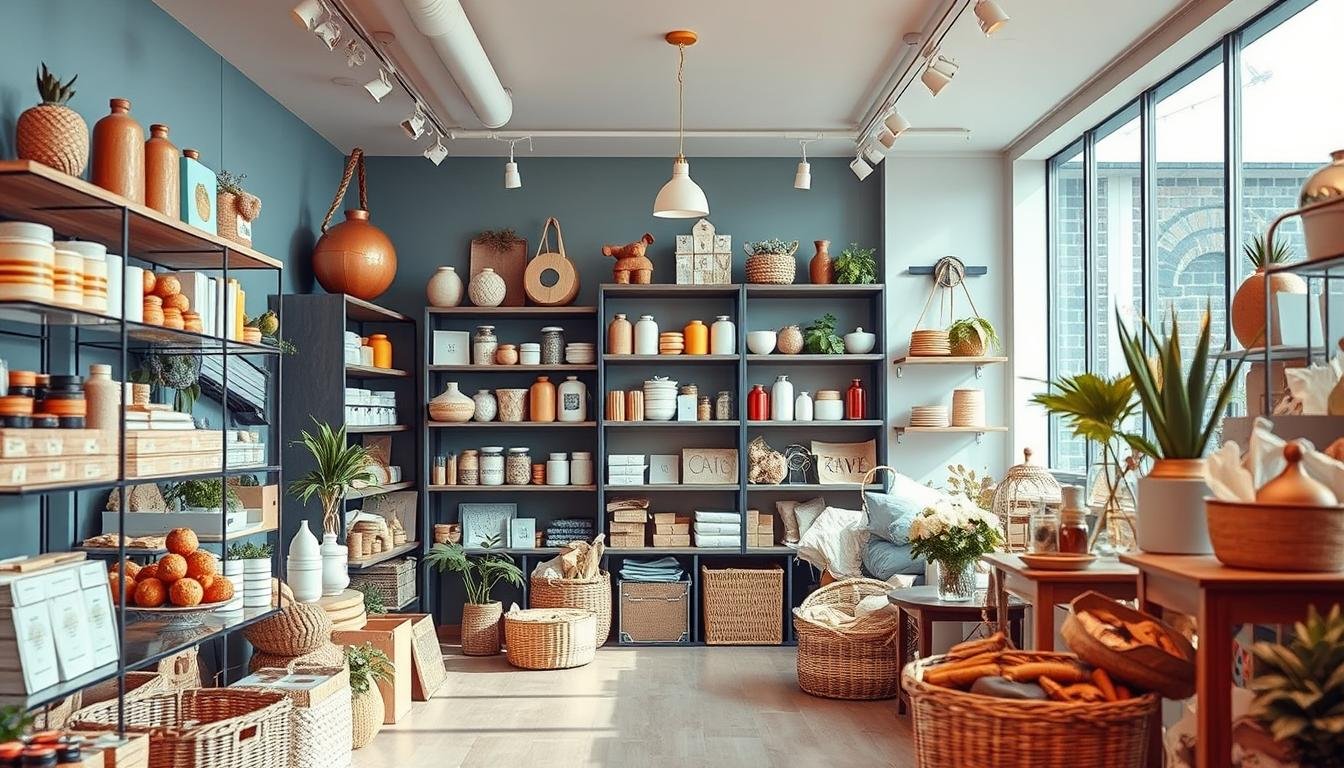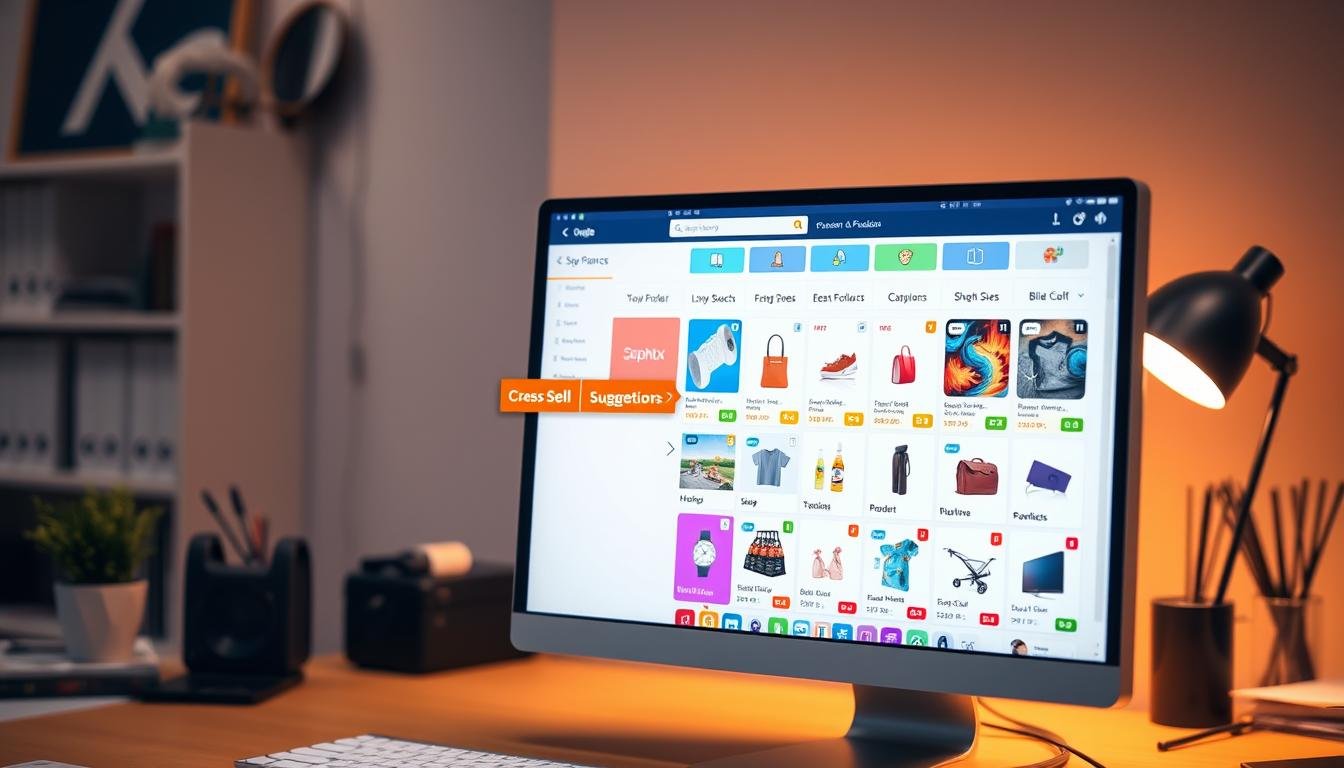Did you know that keeping just 5% more customers can increase profits by 25% to 95%? This shows how important it is to focus on keeping customers and building strong relationships. In today’s competitive world, knowing how to boost Customer Lifetime Value (CLV) is key to growing your business.
Customer Lifetime Value is more than a number; it’s a way to measure a customer’s total value to your business. Building loyalty, using smart retention strategies, and making customer experiences personal are some ways to boost CLV.
This article will show you the top 10 ways to increase customer lifetime value. You’ll learn how to improve customer experience and use upselling techniques. By using a variety of strategies, you can make sure every interaction with a customer helps your business grow in the long run.
Key Takeaways
- Understanding and improving Customer Lifetime Value (CLV) is vital for success.
- Keeping more customers can greatly increase profits.
- Building loyalty and using smart retention strategies are key.
- A mix of strategies can positively impact long-term customer relationships.
- The article offers practical tips to increase customer value.
Understanding Customer Lifetime Value (CLV)
Customer Lifetime Value (CLV) is key for businesses wanting to grow and keep customers for the long haul. This section will explain what CLV is, why it matters for growth, and how to calculate it.
What is CLV?
CLV, or Customer Lifetime Value, is the total value a customer brings to a business over time. By focusing on CLV, companies can make better choices to increase profits and keep customers coming back.
Importance of CLV for Business Growth
CLV is a vital metric for business growth. It helps in making smart decisions and improving marketing returns. Big names like Amazon and Apple use CLV to stay ahead in the market.
How to Calculate CLV
To figure out CLV, you need to know about purchase habits, average spend, and how long customers stay. Here’s a simple formula:
CLV = (Average Purchase Value) × (Purchase Frequency) × (Customer Lifespan)
By calculating these, businesses can understand their customers better and plan strategies to keep them coming back.
Using these insights can help your business grow and understand customer behavior better.
1. Enhancing Customer Experience to Foster Loyalty
Improving customer experience is key to keeping customers for the long haul. By focusing on personalized service, you can boost customer retention and satisfaction. Let’s look at some important strategies to make this happen.
Personalized Customer Service
Personalized service can really shape how customers see your brand. Using advanced CRM tools like Salesforce or HubSpot helps gather and analyze customer data. This way, you can offer services that are just right for them. It makes customers feel special, which helps them stay loyal to your brand.
Creating Engaging Customer Experiences
Creating great customer experiences is more than just talking to them. It’s about knowing what they need and giving them more than they expect. For instance, adding things like live chat or virtual consultations can make their experience better. This leads to happier customers and stronger loyalty.
Omni-channel Support and Interaction
Offering smooth support across all channels is also important. By linking different ways to communicate—like email, social media, and in-store visits—you make sure customers have a unified experience. This approach strengthens loyalty and offers a more tailored service.
2. Implementing Effective Customer Retention Strategies
Keeping your customers is essential for your business to grow. To do this, focus on the onboarding process, offer quality customer support, and listen to and act on feedback.
Prioritizing Customer Onboarding
The onboarding process is the first step in your customers’ journey. Make it positive and helpful to build strong relationships.
- Provide easy tutorials and guides.
- Make sure your onboarding messages are clear and detailed.
- Customize the onboarding to fit what your customers expect.
Providing Excellent Customer Support
Offering quality customer support is key to keeping customers. When customers feel valued and heard, they tend to stay loyal.
- Have different ways for customers to get help, like live chat, email, and phone.
- Train your team to be kind and quick to respond.
- Have a detailed FAQ section to answer common questions early.

Listening and Acting on Customer Feedback
Listening to and acting on customer feedback is a big part of customer retention strategies. By listening and making changes, you show customers you care about their needs.
“Your most unhappy customers are your greatest source of learning.” – Bill Gates
- Use surveys and feedback forms to get insights.
- Make changes based on what customers suggest.
- Tell customers how you used their feedback to show it matters.
By focusing on a good onboarding process, quality customer support, and responding to feedback, you can improve customer satisfaction and loyalty. This will help your business grow.
3. Introducing Loyalty Programs to Encourage Repeat Purchases
Keeping customers is key to growing your business. Loyalty programs help keep customers coming back. They also help build strong relationships with your customers. Here’s how to create a reward system and examples of successful programs.
Creating a Reward System
A good loyalty program has a solid reward system. This can be points for purchases or special membership levels. A good system keeps customers coming back.
- Points-Based Systems: Customers earn points for each purchase, which can later be redeemed for discounts or free products.
- Tiered Memberships: Exclusive benefits at different membership levels based on the amount spent or the frequency of purchases.
- Cashback Offers: Customers get a percentage of their purchase amount back as store credit to be used in the future.
- Referral Bonuses: Incentivizing customers to refer friends or family by giving them rewards for each successful referral.
Examples of Successful Loyalty Programs
Here are some examples of loyalty programs that work:
| Brand | Loyalty Program | Key Features |
|---|---|---|
| Starbucks | Starbucks Rewards | Points for each purchase, free items on earning enough points, exclusive member perks |
| Sephora | Beauty Insider | Tiered membership, redeem points for products, birthday gifts, beauty classes |
| Amazon | Amazon Prime | Monthly/Annual subscription, free shipping, exclusive access to sales and events |
These programs use different rewards to keep customers happy. They show the importance of keeping customers coming back. To start a loyalty program, you need to know your customers well.
4. Leveraging Upselling and Cross-Selling Techniques
To make the most of your sales funnel, learning upselling strategies and cross-selling techniques is key. These methods improve the customer experience and help maximize customer revenue. Let’s explore how to use these tactics well.
Identify Opportunities: Start by looking at how customers behave and what they buy. Tools like Salesforce and HubSpot give insights to find the best times to offer more products or upgrades.
“Upselling and cross-selling have dramatically increased our average order value. By understanding our customers’ needs, we provide them with relevant offers that enhance their shopping experience.” – Jeff Bezos, Amazon
Psychological Triggers: Know what drives customer choices. Offers that are only available for a short time and social proof (like reviews) can push people to buy.
Clear and Relevant Recommendations: Make sure your suggestions match what the customer is looking at. For example, if someone is buying a laptop, suggesting a warranty extension or a laptop bag might be more appealing.
- Subtly introduce upselling strategies during checkouts.
- Leverage cross-selling techniques in product descriptions.
- Use email campaigns to highlight complementary products.
By using these upselling and cross-selling strategies, you can boost your revenue. You also offer value-driven suggestions that make customers happier.
5. Personalizing Marketing Efforts Based on Customer Data
Using data to tailor your marketing can boost customer happiness and loyalty. Learn how to use data to make your marketing better. This includes collecting data, creating personalized campaigns, and analyzing customer behavior.

Data Collection Methods
Getting the right customer data is key for personalized marketing. Use different ways to collect it, such as:
- Surveys and feedback forms
- Website analytics
- Social media monitoring
- Purchase history tracking
Implementing Personalized Campaigns
After you have the data, it’s time to make personalized campaigns. Use what you know to divide your audience and make messages that fit. This can make your marketing more effective and engaging.
- Segmented email marketing
- Targeted social media ads
- Customized product recommendations
Tracking and Analyzing Customer Behavior
Good customer data analysis helps you see how customers act. Use tools like Google Analytics and CRM software to understand what they like and buy. By making your campaigns better based on this data, you’ll get more out of your marketing.
| Method | Purpose | Tools |
|---|---|---|
| Surveys | Gathers customer opinions | SurveyMonkey, Typeform |
| Website Analytics | Monitors user behavior | Google Analytics |
| Social Media Monitoring | Tracks engagement metrics | Hootsuite, Sprout Social |
| Purchase History Tracking | Collects transaction data | Shopify, Magento |
6. Utilizing Content to Keep Customers Engaged
In today’s fast-paced digital world, keeping customers engaged is key. By using effective content marketing, you can build strong relationships and keep customers loyal. This section looks at how to use content to grab your audience’s attention.
Sending Value-Packed Emails
Value-packed emails are a great way to keep your customers in the loop. These emails should offer more than just promotions. They can include educational articles, exclusive discounts, or personalized tips.
For example, you can send a monthly newsletter with tips, industry news, and updates on your products or services. When your emails are full of value, customers are more likely to open them and stay loyal to your brand.
Providing Educational Content
Educational content can make your company a leader in your field. This builds trust and loyalty. Create blog posts, tutorials, and guides that solve your customers’ common problems and answer their questions.
One way to share educational content is through a dedicated blog or resource section on your website. Use SEO best practices and engaging content marketing to reach and connect with the right audience.
Using Social Media to Engage Customers
Social media is great for real-time interaction and building a community around your brand. Post engaging content, like polls and interactive stuff, to start conversations and boost engagement.
Use platforms like Instagram, Facebook, and Twitter to share behind-the-scenes stuff, customer stories, and user-generated content. Regular and thoughtful interaction keeps your online presence lively and engaging.
Also, use tools like to track content effectiveness. This helps you see what content works best and make better decisions for your strategy.
Here’s a comparison of content strategies:
| Strategy | Advantages | Examples |
|---|---|---|
| Value-Packed Emails | High open rates, increased loyalty | Monthly newsletters, exclusive discounts |
| Educational Content | Builds trust, positions as a thought leader | Blog posts, tutorials, guides |
| Social Media Engagement | Real-time interaction, community building | Posts, polls, user-generated content |
7. Offering Incentives for Increased Customer Spend
Incentives are key to getting customers to spend more. They help increase Customer Lifetime Value (CLV). By using different customer spend incentives, businesses can get more sales and build lasting loyalty.
Discounts and Free Shipping
Discounts are a great way to boost sales. Limited-time offers create a sense of urgency, making customers buy sooner. Adding free shipping to discounts makes it even better. Free shipping removes a big barrier to buying.
Gifts with Purchase
Providing gifts with purchase is another smart move. Customers love the extra value, which makes them more likely to buy. This can also get them to buy more to get the free gift, raising the average order value.
Bundles and Bulk Purchase Discounts
Product bundles and bulk discounts can really increase spending. Bundling related items adds convenience and value. It makes it easier for customers to find what they need and spend more.
Bulk discounts encourage bigger orders, as customers want to save more. These strategies tap into what customers want, leading to more engagement and spending.
To learn more about boosting customer engagement, check out this guide on upselling strategies.
8. Focusing on Customer Feedback for Continuous Improvement
Listening to customer feedback is key for growth. It helps improve your offerings and boosts Customer Lifetime Value (CLV). By using customer insights, you can make your products better.
Collecting Feedback Through Surveys
Surveys are a great way to get customer feedback. They help you understand what customers like and what needs work. Tools like SurveyMonkey and Google Forms make it easy to create and share surveys.
Implementing Changes Based on Feedback
After getting feedback, it’s important to act on it. Making changes shows you value your customers’ opinions. This builds loyalty and helps your business grow. Brands like Amazon and Starbucks are good examples of this.
- Analyze feedback quickly to find trends and problems.
- Tell your customers about the changes you made.
- Check if the changes are working well.
By listening to feedback and making good changes, you please your customers. This also helps your business grow naturally.
9. Building Strong and Lasting Customer Relationships
Building strong customer relationships is key to long-term success. It starts with personalized communication, community engagement, and showing customer appreciation. These actions boost loyalty and improve how people see your brand.
Personalized Communication
Personalized messages are a strong tool for building lasting relationships. When you tailor your messages to meet individual needs, it shows you care. Emails, messages, and social media that show you’ve been paying attention can make customers feel valued and loyal.
Community Building and Engagement
Creating a strong community around your brand builds an emotional bond. Online forums, user groups, and events help customers connect. Social media and membership programs can help, making customers feel part of something bigger.
Customer Appreciation Events
Showing your thanks through special events is a great way to keep customers loyal. Whether online or in-person, these events can make a big difference. Think about hosting exclusive product launches, discounts, or special gatherings to celebrate your customers.
| Strategy | Benefits |
|---|---|
| Personalized Communication | Increased engagement, fosters loyalty |
| Community Building and Engagement | Encourages emotional connection, drives community interaction |
| Customer Appreciation Events | Shows gratitude, reinforces loyalty |
10. Use Shopify Apps to Boost CLV
Shopify apps are a great way to boost CLV. The MVR Free Shipping Bar & Upsell app is top-notch. It has features that help increase customer lifetime value.
MVR Free Shipping Bar & Upsell
The MVR Free Shipping Bar & Upsell app encourages customers to buy more. It offers free shipping when they hit a certain amount. It also suggests upsells, helping them add more items to their carts.
Main Features and Benefits
The MVR Free Shipping Bar & Upsell app has many great features:
- Free Shipping Bar: Shows a bar telling customers how much they need to spend for free shipping. This encourages them to buy more.
- Upsell Offers: Recommends products during checkout to increase the average order value.
- Customizable Design: You can make it look like your store, so it fits perfectly.
- Analytics: Tracks how well free shipping and upsell campaigns are doing. This helps you make them better.
These features make shopping better for customers. They help keep customers coming back and increase CLV.
How to Implement the App on Your Shopify Store
Adding the MVR Free Shipping Bar & Upsell app to your Shopify store is easy:
- Install the App: Go to the Shopify App Store, find MVR Free Shipping Bar & Upsell, and install it.
- Customize your Settings: Set up the free shipping bar and upsell offers to fit your store.
- Monitor Performance: Use the app’s analytics to see how well your campaigns are doing. This helps you improve them.
Using Shopify apps like MVR Free Shipping Bar & Upsell can really help increase CLV. This drives your e-commerce business to grow in a sustainable way.
Conclusion
In today’s world, it’s key to know how to keep customers coming back. We talked about many ways to do this, like making customers happy and using smart marketing. These steps help keep customers loyal, which is good for your business.
Keeping customers happy is the core of these strategies. When you focus on making them happy, you keep them coming back. This not only saves money but also opens doors for more sales. It builds a loyal customer base and strengthens your brand.
Platforms like Shopify also help in making more money. For example, apps like MVR Free Shipping Bar & Upsell can help you sell more. You can find out how to use these tools for your Shopify store here. By using these strategies, you can stay ahead in the market and succeed for a long time.


